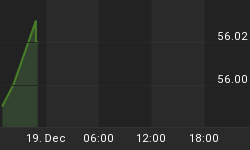I almost fell out of my chair when reading the minutes of the August 9 FOMC meeting. What rocked me? The following sentence: "Another participant mentioned, however, that recent sluggish growth of the monetary aggregates suggested that the stance of policy was not overly accommodative." Can you believe that someone on the FOMC actually has put "M" back in monetary policy? What's more, even a Fed Board staffer made a telling comment about the behavior of the monetary aggregates. To wit: "Despite the recent slow growth of M2, its velocity remained low relative to the level that would be expected based on its historical relationship with opportunity cost." So, not only has M2 growth been slow, but faster velocity growth is not compensating for it.
The chart below shows the history of the year-over-year percent change in the real M2 money supply (nominal M2 divided by the CPI). As of July 2005, real M2 was up only 0.6% vs. year ago. The nadir of real M2 growth prior to the 2001 recession was 2.0% in July 2000. Real M2 growth in July 2005 was below what it was just prior to the 1960 recession and the unofficial "mini" recession of 1967. Although real M2 growth currently is above what it was in the recovery following the 1990 recession, money velocity growth was much stronger at that time. Although real M2 is not as reliable a leading indicator as it used to be, it still is reliable enough to be included as a component of the Conference Board's Leading Economic Indicators index. And its trend growth behavior still provides good qualitative information about the trend growth in economic activity. Real M2 growth currently is sending a warning signal about the future trend growth of real economic activity. At least one FOMC member has taken notice. I would not be surprised if the tone of discussion at the September 20 FOMC meeting is somewhat more guarded about the strength of the economy going forward. That is, the comment that monetary policy remains accommodative may be on the way out.

















